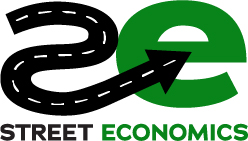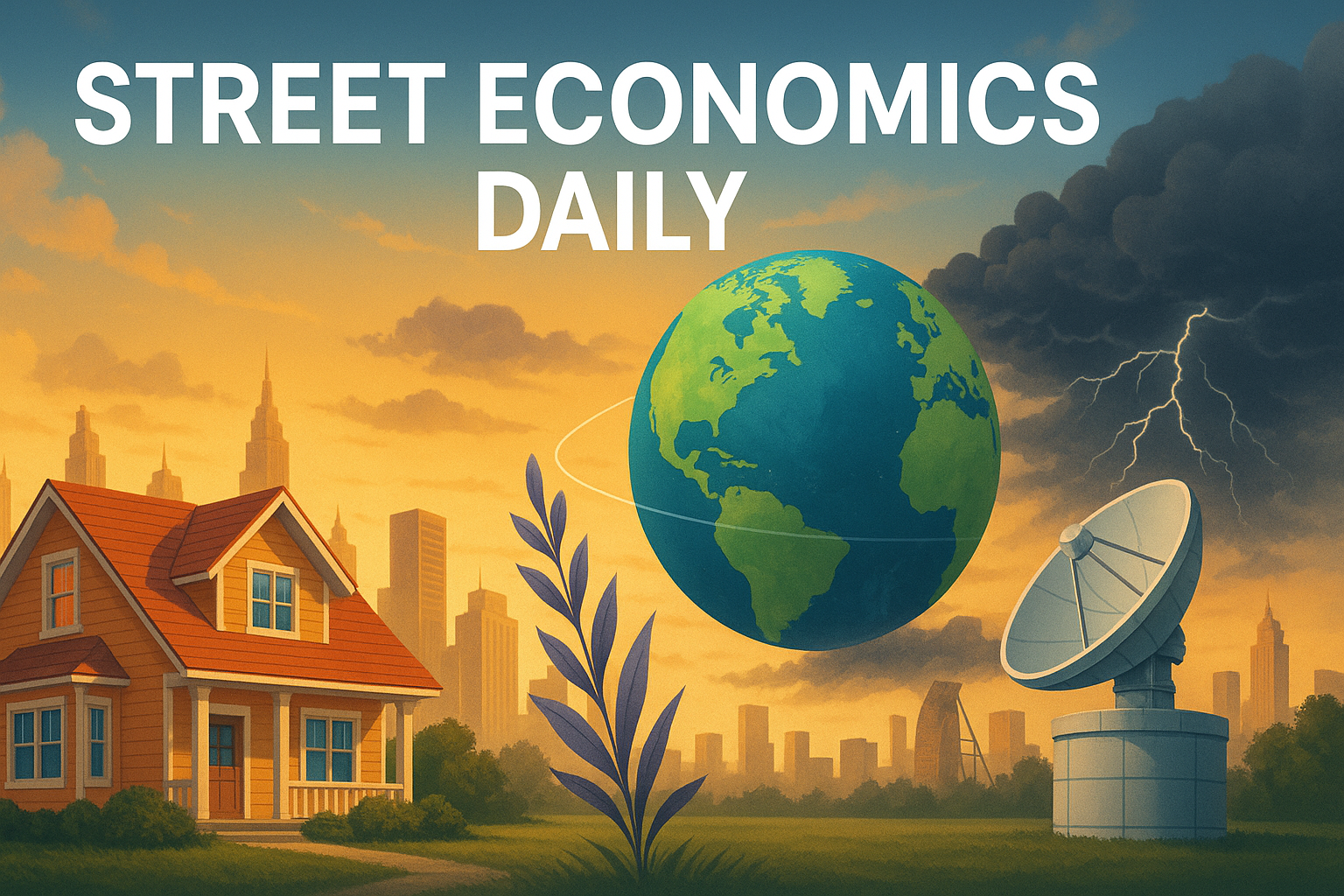Book Drop – Gut Sandwich Meets Home Price Hype
Data without context? Newsweek’s latest “10 hottest housing markets” list is a who’s who of unexpected boomtowns. Syracuse (NY) up 18%, Youngstown (OH) +13.6%, Montgomery (AL) +16%… Should these Rust Belt and backwater cities suddenly be crowned real estate nirvanas? Not so fast. This is a classic Gut Sandwich failure – the kind Kevin C. warns about in Gut Sandwich: Why Gap Analysis Falls Short. Sky-high year-over-year price gains reflect scarcity, not desirability. When a small, struggling college town runs out of homes for sale, prices spike – it doesn’t mean U-Hauls are swarming in with eager new residents. As the Gut Sandwich concept teaches, raw data needs a reality check: A surge in median home price might just mean you’re running out of houses, not that you’ve become the next Silicon Valley. Economic developers: chew on the whole sandwich. Rapid price appreciation in places like Allentown or Gulfport is more red flag (supply crunch) than blue ribbon. In other words, don’t bet the farm on percentages without tasting the local flavor.
Red River Flavor – The Dirt on Soil (and Economic) Resurrection
Time to get down to earth, literally. A fresh study out this week puts soil restoration in the spotlight as a secret weapon for economic resilience. Turns out that rebuilding healthy soil doesn’t just make environmentalists happy; it boosts crop yields, slashes farmers’ costs, buffers against droughts, and even “bolster[s] economies of hard-hit rural communities”. Who knew? (Answer: probably your grandpa, and indigenous farmers, but now we have peer-reviewed backup.) After decades of Big Ag’s “get big or get out” approach that leeched nutrients and life from our lands, scientists are effectively saying, “Hey, maybe not turning our soil into dead dust is good for business too.” Shocking! Healthier soil means more nutritious food, less dependency on chemical fertilizers, and more local food security – all components of a sturdier local economy. This is vindication for all the farmers and food sovereignty folks who’ve insisted that regenerative practices (cover cropping, no-till, organic amendments, etc.) aren’t just hippie talk, but sound economics. It’s also a big middle finger to the processed-food-industrial complex. After all, nutrient-rich soil produces actual nutritious food, undermining the Big Food narrative that we need their fortified sugar cereals to survive. In short: healing our dirt might heal our wallets and our guts, which is exactly the kind of spicy truth Red River Flavor is here for.
BusinessFlare Take – South Florida’s Wealth Vacuum
New York’s top earners are discovering something called sunshine, and South Florida is laughing all the way to the bank. In a classic case of “Thank you for the billion-dollar donation”, new data shows NYC lost $14 billion in income from 2017–2022 as tens of thousands of high-earning residents fled – with $9.3 billion of that landing in South Florida’s tri-county area. Palm Beach, Broward, and Miami-Dade didn’t become “Wall Street South” by accident: they turned on the low-tax, pro-business charm while New York politicos doubled down on heavy taxes and headaches. The result? South Florida overall, and not just South Beach anymore, is now de facto the “New York of the South,” complete with hedge funds, private equity firms, and enough transplanted millionaires to recreate the Upper East Side at a Boca Raton country club. BusinessFlare 101: When one city treats wealth like a piñata to be smashed, another city lays out a bowl to catch the candy. High earners will move faster than a Kardashian wedding if they sense a better deal. Sure enough, Miami’s skyline is now dotted with the logos of Citadel, Starwood, and a who’s-who of finance and tech firms. Meanwhile, New York is stuck debating why budget shortfalls keep growing. Consider this a masterclass in competitive economic development: Florida did the right things but didn’t just attract wealth by itself – New York pushed it out. The lesson for cities? Create an environment where success is celebrated, not penalized, or watch your tax base head for the palm trees.
Street Economics Insight – College Town Crash in Macomb, IL
What happens when a college town’s college starts emptying out? Economic cardiac arrest, that’s what. Take Macomb, Illinois, home to Western Illinois University which has lost nearly half its students since 2010, turning a once-vibrant campus enclave into a ghost town. This isn’t just a slow news day sob story; it’s a warning to any one-horse economy. In Macomb’s case, the horse was WIU, and now that horse is in the ICU. Dorms are shuttered, faculty laid off, and the local pizza joint and clothing store are either struggling or done for. City sales tax revenue fell “almost proportionally” with the enrollment plunge – as if someone took the town’s wallet and put it on the same diet as the student population. The Street Economics angle? Over-reliance on a single economic driver (like a university) is dangerous; diversification isn’t just a buzzword, it’s survival. Macomb’s leaders are scrambling to attract manufacturers (a Pella window factory here, an NTN-Bower plant there) and even landed a T.J. Maxx and Hobby Lobby to fill some void. There’s talk of a sports complex to draw tourist dollars. Will it be enough? Probably not to replace thousands of students, but it’s the only play they’ve got. The broader insight: America’s college-town bubble is bursting in places that aren’t flagship mega-universities. Demographics, remote learning, and tight state budgets are dealing body blows to regional schools and the towns that depend on them. Macomb’s future will depend on reinvention, not revival. Other small college towns, take note – get busy diversifying or join the bust club.
Space Economy Signal – Ground Control to Major Telesat
When we think “space race,” we picture rockets blazing and shiny satellites. But here’s a twist: even the ground is now a battlefield in the space economy. Canada’s Telesat Corp. just put out an RFP (request for proposals) that could be worth up to $1 billion for building and operating new ground stations for its Lightspeed satellite constellation. That’s right – a cool billion for a bunch of dish farms and data centers on Earth. Why should city leaders care? Because those ground stations have to be built somewhere, and wherever they land may see investment, jobs, and high-tech infrastructure plugging into the global broadband network. Telesat’s move underscores how the space industry isn’t just about Cape Canaveral launches; it’s also about local construction crews pouring concrete for antenna pads in the middle of nowhere (or perhaps the outskirts of somewhere). In typical fashion, Telesat is looking to outsource this hefty project to whoever can expand and manage the sites best – essentially creating a new space infrastructure sector here on the terra firma. It’s a reminder that the downstream side of “space” – the signal processing, teleport, ground network – is big business too. For economic developers, if you can’t have a SpaceX launchpad in your backyard, maybe you can snag a satellite ground hub instead. They may not be tourist attractions, but they just might pump some money into a local economy. In the new space economy, it’s not just rocket scientists wanted – it’s also civil engineers, fiber optic technicians, and a lot of electricians. Ground control is where much of the action (and spending) is.
Drama Meter – Mayor vs. ICE: Newark’s Showdown
Local government drama, coming in hot. Newark Mayor Ras Baraka got himself arrested last week after joining protesters at a local ICE detention center. Yes, you read that right: a sitting U.S. mayor in handcuffs for trespassing at a federal facility. You can practically see the drama meter needle snapping off as it pegs at 10 out of 10. Baraka – who just so happens to be in a competitive Democratic primary for New Jersey governor – has turned his legal scuffle into a rallying cry. Supporters (including the ACLU of NJ) are livid, saying we “should be outraged by what happened to Mayor Baraka”, painting him as a victim of overzealous feds. Meanwhile, Republicans are screaming that a mayor should know better than to storm a government facility, accusing him of grandstanding and lawlessness. The whole episode has morphed into a partisan circus: protest chants on one side, “shame on you” press conferences on the other. In other words, peak New Jersey. This is local governance in 2025 – where a city leader getting perp-walked becomes a political Rorschach test. Regardless of which side you take, it’s clear Newark’s City Hall and the surrounding community have some work to do. When your mayor vs. federal government cage match becomes bigger news than any policy or budget, that’s a dysfunction alert. As a metric, Drama Meter is off the charts on this one. The takeaway for other cities: perhaps keep your mayors out of jail, even for symbolic causes, so you can focus on, you know, delivering city services instead of delivering fiery soundbites outside a courthouse.

The Music Cities – Jazzed for a Downtown Revival
Jacksonville is proving that sometimes the best downtown revitalization plan is simply throwing a massive music party. This weekend, the city will host the 2025 Jacksonville Jazz Festival, a free four-day jam session that’s expected to draw music lovers from all over the country. We’re talking headliners like The Roots, Janelle Monáe, Trombone Shorty – basically an embarrassment of riches for jazz and funk fans. And here’s the economic development kicker: the city reconfigured the festival layout to accommodate even more guests downtown, consolidating to one giant stage so nobody misses a beat. Translation: pack the waterfront with as many people (and wallets) as humanly possible. Local hotels, restaurants, and bars are salivating. This festival has been a Jacksonville staple for years, but city officials clearly see an opportunity to leverage it as an image booster and economic driver, especially with “exciting developments” happening downtown that they want to show off. It’s a page right out of the Music Cities playbook – use live music to create an experience that neither Amazon nor Netflix can replace, draw folks into the urban core, and let the vibe (and spending) ripple outward. From Nashville to New Orleans, we’ve seen how anchor events and venues can transform a city’s fortune, and Jacksonville is aiming for that groove. The best part? Since the festival is free, it’s truly accessible – meaning everyone from the hardcore jazz aficionados to the casually curious locals can join the party. Civic leaders everywhere, take note: when in doubt, add more music. It’s hard to be morose about downtown decay when you’re dancing in the street to a hot trombone solo under the stars.
Purple Cow of the Day – The Austin Mirage: Branding Isn’t Resilience
Austin’s reign as America’s go-to tech hub might be coming to an end – and the reasons should terrify every city banking on its “vibe” as a strategy. A Wall Street Journal deep dive reveals how pandemic-era hype fueled sky-high housing costs, wage inflation, and office vacancies that are now unraveling the very advantages Austin once marketed . Employers are pulling back, and the workforce, once easy to attract, is starting to question whether the city can still deliver. What’s worse: despite its tech cred and creative scene, Austin has no built-in economic safety net beyond talent buzz and lifestyle branding. In the Unleash Your Unfair Advantage framework, this is a reverse Purple Cow – a city that built its growth around sizzle and might have forgotten the steak. Austin sold the story but now looks like maybe it didn’t invest enough in the fundamentals: housing supply, transportation infrastructure, and cost balance. And now it may bleed talent to smaller cities with better quality-of-life ratios and fewer headaches. For economic developers, this isn’t just schadenfreude – it’s a blueprint in negative space. The cities that win long-term won’t be the ones chasing the next buzzword (innovation corridor, anyone?), they’ll be the ones quietly investing in resilience, affordability, and stable functional government. That’s the new unfair advantage.
ECOSINT Signal – The Gathering Storm and the City-Level Threat Picture
Scott Mann’s Pineapple Press’s new book The Gathering Storm delivers a brutal message wrapped in intel-grade storytelling: America’s real vulnerabilities aren’t on some distant battlefield – they’re here at home, in your city, school, and downtown corridor. Mann, a retired Green Beret and architect of Operation Pineapple Express, lays out a chilling case that the tactics used by Hamas in Israel or Lashkar-e-Taiba in Mumbai could be adapted for swarm-style, coordinated assaults inside the United States.
The core idea? Asymmetric warfare is going local, and cities are the frontline. According to the contributors, America’s enemies aren’t plotting Red Dawn – they’re preparing to hit soft targets: schools, churches, and city halls – not with tanks, but with coordinated chaos. These are small teams exploiting open systems, slow response times, and political paralysis to inflict maximum disruption.
This is the kind of threat that ECOSINT – economic open-source intelligence – can help flag. If your city’s emergency plans are still stuck in 2002, you’re not ready. City leaders need to think like adversaries: What are our weak points? Where could multiple minor attacks cause major economic fallout? How quickly can our institutions respond – or fail?
The Gathering Storm isn’t alarmism. It’s a call to action for cities to update their readiness mindset. Economic development doesn’t exist in a vacuum. It depends on public confidence, infrastructure resilience, and civic continuity. If a few smart phones and bad actors can shut down your city for 48 hours, your whole growth model is on shaky ground.
This book should be required reading not just for school security staff, but for mayors, city managers, and economic developers. If you care about investment, business attraction, and public trust – start by understanding the asymmetric threats that could unravel it all in a single afternoon.
Street Economics Daily delivers irreverent, real-world insights for city leaders and urban warriors. We cut through the academic B.S. and tell it like it is about economic development, local policy, and community vitality. Dive in each day for sharp analysis served with a side of wit. And remember, all economics is local.




Comments are closed